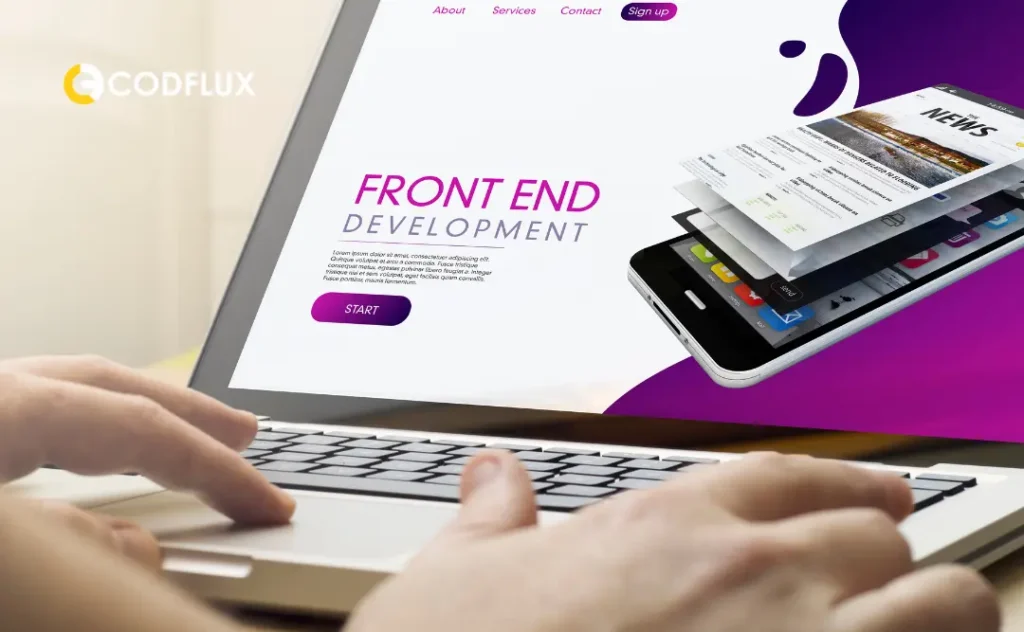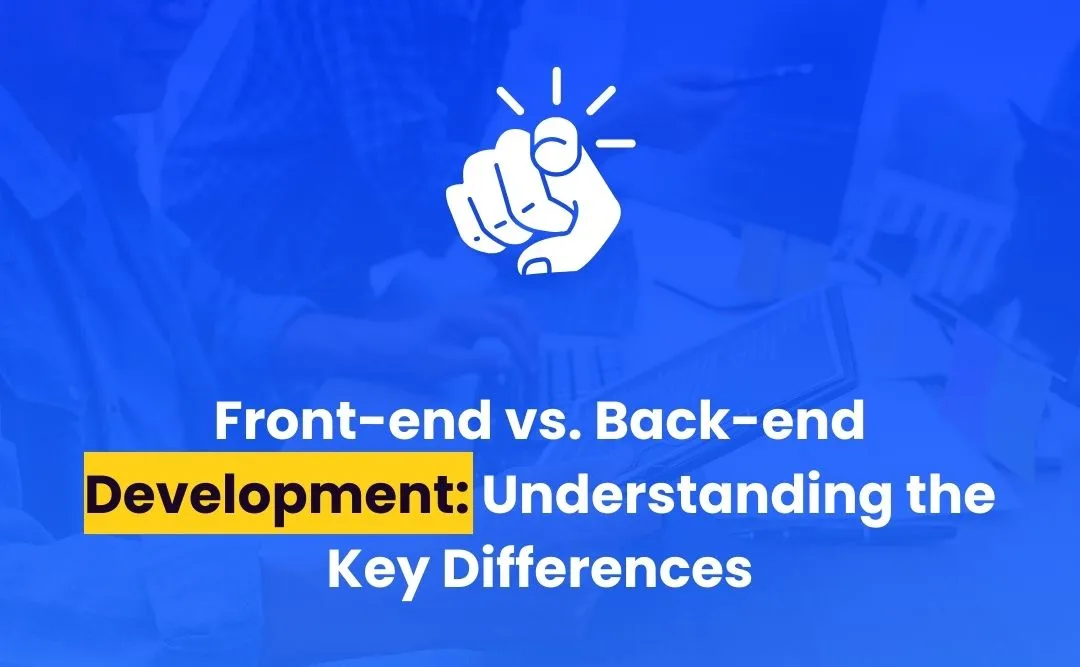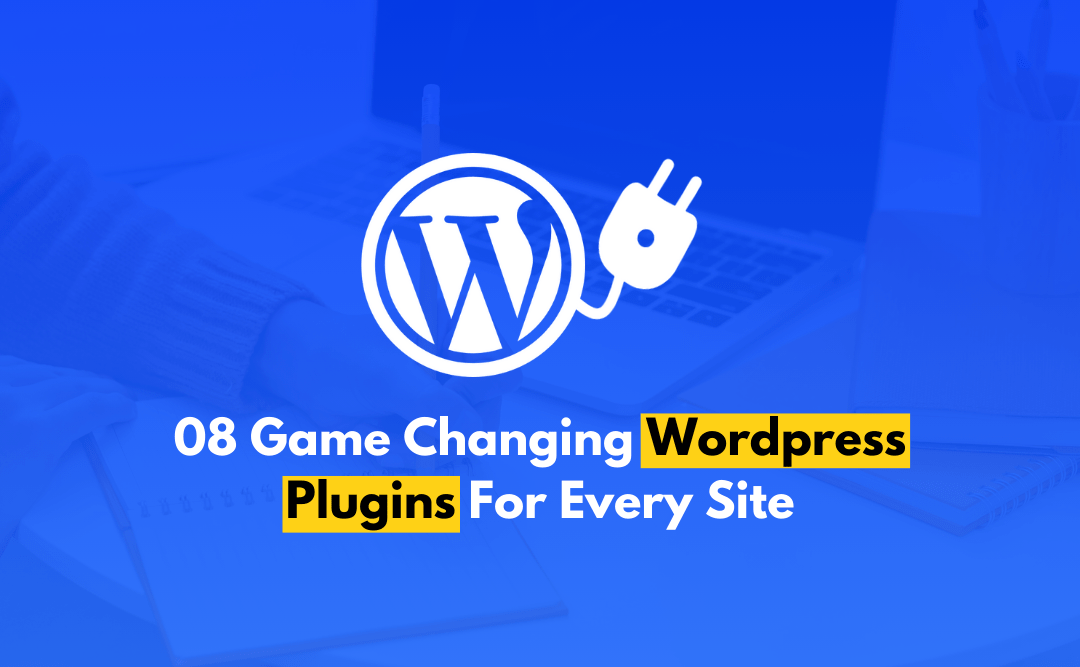In web development, one often hears about the terms “front-end” and “back-end.” These are two concepts that are different parts of the development process; each, in its own right, is critical to the building of a functional, aesthetically pleasing, and user-friendly website or application.
The front end means everything visible to the user and acts on it directly, like layout, design, and functionality. The back-end means all the behind-the-scenes stuff, which powers everything regarding data flow, security, and functionality.
Understanding the front-end vs back-end development can help explain how digital experiences come to life. CODFLUX is here to explain what each role entails, the technologies and skills needed, and why both are important in successful digital projects. Knowing how these roles interact will enhance your appreciation of the web development process if you are new to development or simply looking to deepen your knowledge.
Front-end vs Back-end Development
Front-End vs Back-End Development: the dynamic duo behind every website! Front-end is all about the look and feel, crafting what users see and click. Back-end, meanwhile, is the hidden hero, managing data and functionality to keep everything running smoothly. Together, they make web magic happen!
What is Front-End Development?

Front-end or client-side development is the portion of a website or application with which users interact. It consists of everything that the user sees – aesthetically pleasing, responsive, and user-friendly for a good user experience – everything on the face that the user notices in the way of design or images. Front-end developers create front-end elements, including the layout, the application’s design, images, navigation, interactive features and everything else as it appears to the visitor. The following are the most basic front-end technologies:
- HTML or HyperText Markup Language is the building block of every web page. HTML defines a website structure, and this will determine headers, paragraphs, images, and hyperlinks.
- CSS is the cascading style sheets that determine how to format a website by the layouts, colors, fonts, etc. Thus, the entire web page has a very consistent theme.
- JavaScript is the programming language that provides a site with interactivity and allows users to interact better with features such as animations, form validations, and dynamic content.
Other than the three core technologies, most front-end developers work with a series of frameworks and libraries, including React, Angular, and Vue.js, ensuring a site is responsive across various devices. It also ensures accessibility so everyone can use it regardless of disability.
What is Back-End Development?

Back-end development, also called server-side development, is developing the behind-the-scenes aspects of an application or website, including databases, server-side logic, and data processing. It’s the part that’s usually hidden from users but must be there for functionality, security, and performance. The main elements of back-end development are as follows:
• Server: The server hosts the application, processes user requests, and manages the data flow between the client and database.
• Database: The database stores, retrieves, and organizes data. MySQL, PostgreSQL, and MongoDB are examples of databases with which a back-end developer collaborates to ensure efficient data storage and management.
• Programming Languages: For a back-end developer, there are languages like Python, Ruby, Java, PHP, and Node.js that power server-side logic, manage user authentication, process data, and more to ensure security.
Back-end developers provide data security and safety and implement effective protection measures for user information. They also pay attention to application performance and scalability, which make it easier for a website to handle increased traffic and data loads without affecting user experience.
Front-End vs Back-End Development: Key Differences
Though they are interrelated, front-end and back-end development have different types of responsibilities and skill sets:
User Interaction
- Front-End: Controls everything exposed to and seen by a user, that is, designing and UI components.
- Back-End: Processes the logic and manipulates the data while operating in a background context to facilitate front-end interactivity.
Technologies Used
- Front-End HTML, CSS, JavaScript, or frameworks used in front end like React, Angular or Vue.js.
- Back-End: Server-side languages include Python, Ruby, or Java. Along with them are frameworks used at the back end, with Express.js, Django, and Ruby on Rails.
Skills Sets
- Skills required by a Front-End Developer include Responsive design principles, aesthetics and proficiency in front-end technology.
- Back-End Developers: Need to be experienced in database management, server administration, and performance and security-related back-end logic.
Responsibilities
- Front-End: Develop aesthetically appealing and user-friendly interfaces that could optimize the load time of the pages and make the process more usable.
- Back-End: Ensure proper flow of data between front-end and back-end. Manage the security aspect as well as maintain server stability.
Performance Metrics
- Front-End: Measured based on metrics such as the engagement level of the user, the load times and responsiveness of the application.
- Back-End: Measured by server response times, the database’s efficiency, and the application’s stability.
Front End vs Back End Developer: Which is Harder?
Which is front-end vs back-end development harder? Although it depends on skills and project demands. Front-end development focuses on designing the user interface and creating an engaging, intuitive experience using HTML, CSS, and JavaScript. It requires a solid grasp of responsive design, creativity, and a keen eye for detail to build layouts compatible across devices and browsers.
Back-end development, however, deals with server logic, databases, and application architecture, using languages like Python, Ruby, and SQL. It requires complex problem-solving, security management, and scalability considerations to ensure seamless functionality and data flow.
Each has its challenges—the front end demands visual creativity and precision, while the back end requires strong logic and technical depth.
Importance of Collaboration
For a website or application to work smoothly, the cooperation of front-end and back-end developers is needed. While front-end developers need some data and features for the best interface design, the back-end developers ensure that the front end has secure and fast access to that data. Thus, good communication between these roles can bring about applications that fulfill the user’s expectations in functionality and experience, thus giving higher user satisfaction.
Conclusion
The differences between the front-end and back-end development processes help to elaborate on how sites are produced that are interactive and attractive to the visitor. Both features play a huge role, wherein the former delivers the front-end elements, such as visual and interactive aspects, whereas the latter focuses on functionality, security, and performance. Understanding these distinctions can make way for greater collaboration to produce successful digital projects.
Frequently Asked Questions
What’s the difference between front-end and back-end development?
It mainly lies in the point of interaction with a user and functionality. Front-end development refers to the design or the user interface with which the users interact. On the other hand, the primary involvement of back-end development lies in server-side processes, data management, and functionality with which users do not interact.
Does the front-end developer need any knowledge of coding?
Front-end developers must have a basic understanding and skills associated with languages like HTML, CSS, and JavaScript when creating visual features or user experiences on a website.
Is there an option where the individual is a combination of a front-end developer and a back-end developer?
It is referred to as a full-stack developer. It takes charge of the overall responsibility of both the front and back ends of an application, ensuring a person handles complete development on websites.





